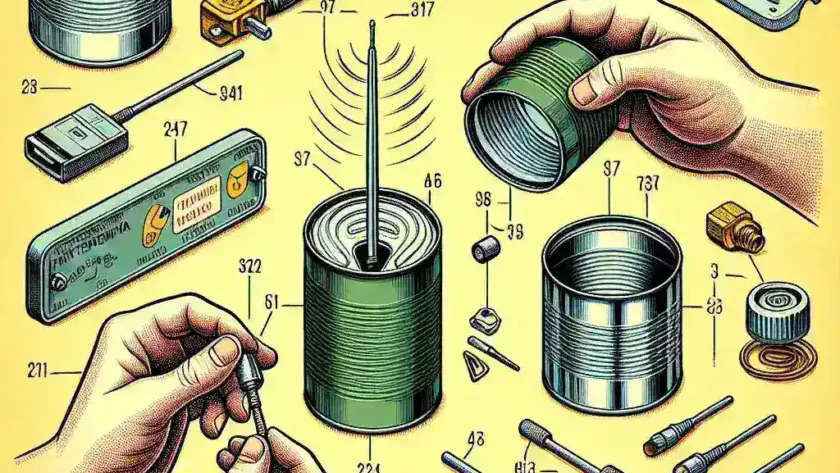Are you struggling with weak Wi-Fi signals at home or your office? A simple, cost-effective solution is the creation of a cantenna, a homemade antenna crafted from an empty can that can significantly enhance your Wi-Fi reception. This article will guide you through the steps on how to make a cantenna to boost your wireless connectivity.
Materials Needed
Before diving into the construction process, ensure you have the following materials ready:
- Empty can (Pringles can or similar)
- N-type female chassis mount connector
- Wire or pigtail for the Wi-Fi card
- Soldering iron and solder
- Scissors or a utility knife
- Drill with a small drill bit
- Ruler or measuring tape
- Marker
Steps to Make a Cantenna
1. Select the Right Can
The first step in making a cantenna is choosing the appropriate can. A can with a diameter of 3 inches provides optimal performance. The length of the can should typically be around 5 inches.
2. Measure and Mark
Using a ruler or measuring tape, measure 4 inches from the bottom of the can and mark the spot with a marker. This will be the point where you will drill a hole for the N-type connector.
3. Drill the Hole
Carefully drill a hole at the marked spot. Ensure that the hole is just big enough to tightly fit the N-type female chassis mount connector.
4. Attach the N-type Connector
Insert the N-type connector through the hole from the inside of the can. Secure it in place using the nut provided with the connector. If necessary, apply some solder to make sure it is firmly attached.
5. Prepare the Wire
Prepare a piece of wire that will act as the antenna. This wire should be about 1.21 inches long, which corresponds to one-quarter of the wavelength for the typical Wi-Fi signal frequency of 2.4 GHz.
6. Connect the Wire
Solder this wire directly to the center pin of the N-type connector. Ensure that the wire is centered in the can and standing upright.
7. Assemble the Cantenna
Once the wire is attached, your cantenna is almost ready to use. Connect the N-type connector to your router or Wi-Fi card using a suitable pigtail or adapter.
Performance Testing
After assembly, its time to test the cantenna. Find an optimal position for it, usually pointing towards the source of the Wi-Fi signal. You should notice a significant improvement in signal strength and quality.
Example of Performance Improvement
| Scenario | Signal Strength (dBm) | Download Speed (Mbps) |
|---|---|---|
| Without Cantenna | -72 dBm | 15 Mbps |
| With Cantenna | -58 dBm | 30 Mbps |
Conclusion
With these simple steps, you can create a cantenna that will boost your Wi-Fi signal significantly. This DIY project is not only economical but also quite effective in enhancing your wireless connectivity.
Remember to place the cantenna in the right direction for optimal performance. Happy experimenting!

